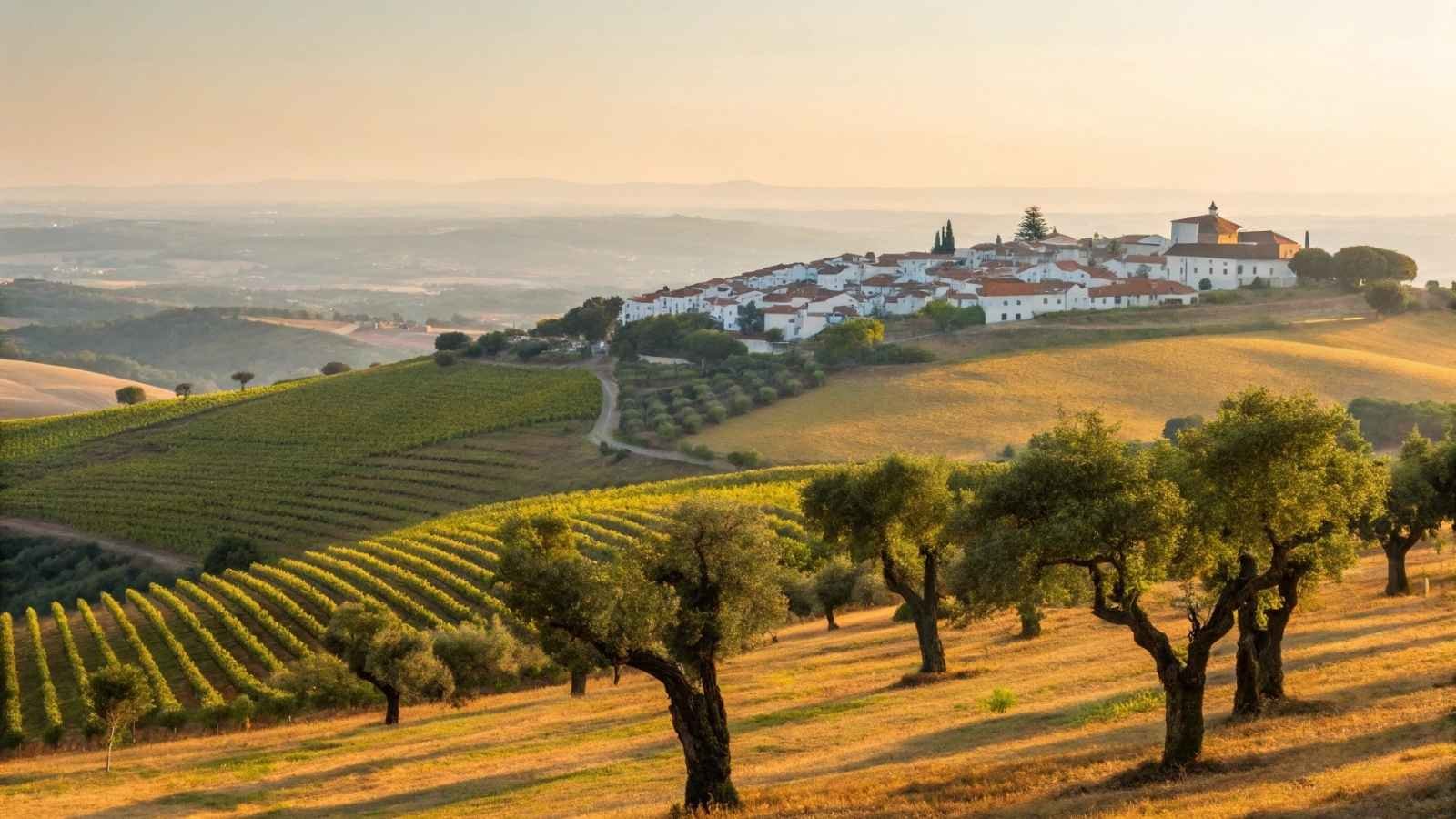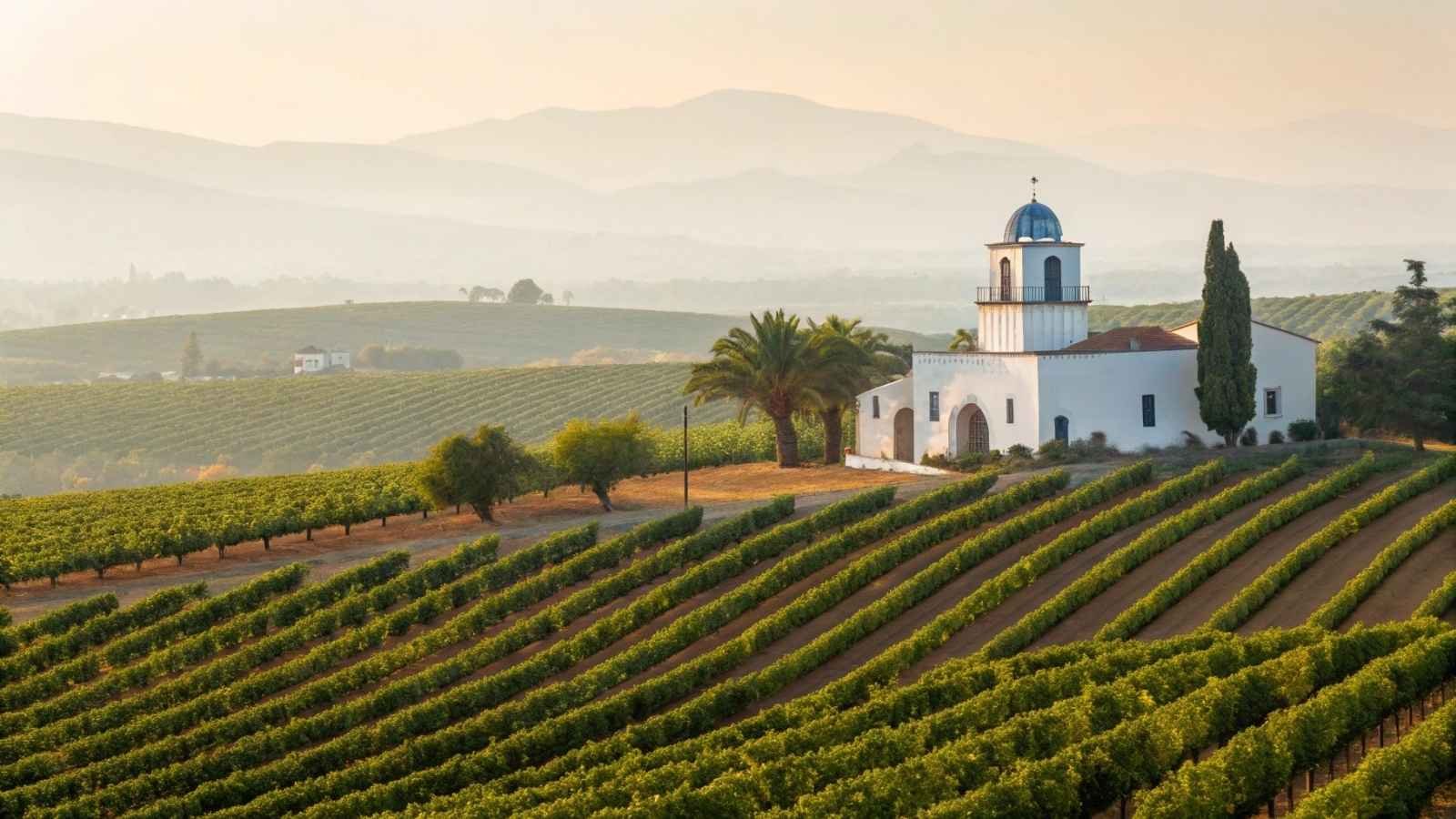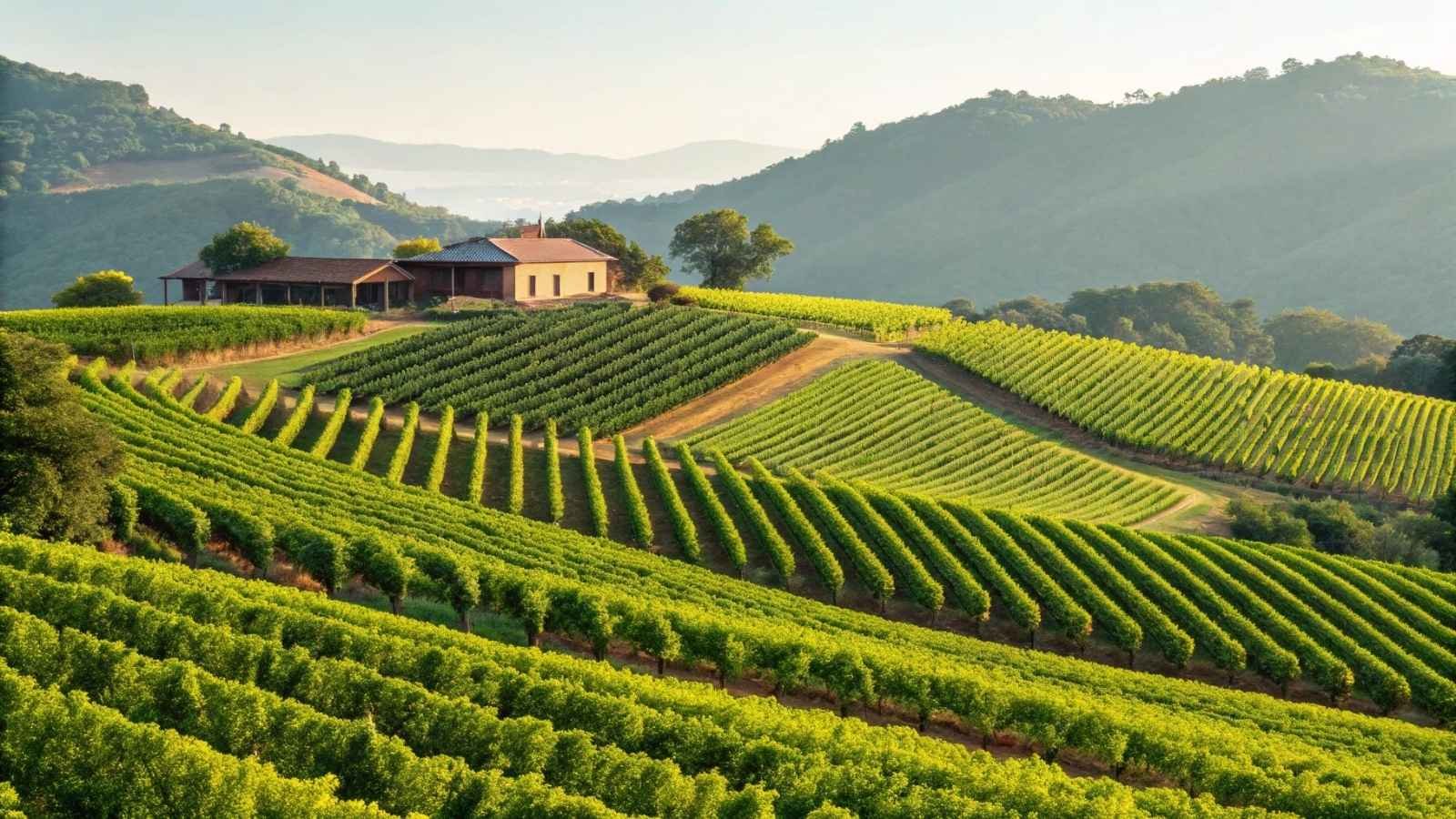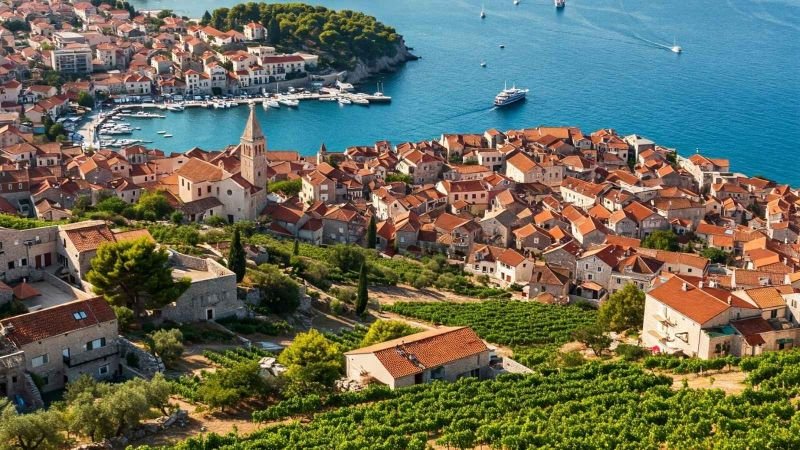
There’s something magnetic about owning a piece of the good life—where earthy reds swirl in your glass, the sun warms your back, and vines stretch for miles across breathtaking landscapes. But what if you didn’t need millions to make it real?
A growing number of vineyards around the world are opening their gates to foreign investors, offering a chance to earn annual dividends, enjoy vacation stays, and become part of something timeless, without the full weight of ownership.
This isn’t just an investment; it’s an invitation to live beautifully. Let’s explore the nine regions quietly rewriting the rules of wine country living.
1. Alentejo, Portugal

Hidden in Portugal’s southern border, Alentejo has steadily emerged as the darling of international wine enthusiasts. No longer overlooked by the glory of the Douro Valley, this region soaks up plenty of sun with its now increasingly sought-after reputation for full-bodied reds, cheap land prices, and relaxed atmosphere. Interested investors are responding, particularly investors who are eager for low-priced vineyard share opportunities tied to lavish holiday benefits and bonus annual profits sharing.
What makes Alentejo so appealing is its balance of tradition and innovation. Many vineyards here still use ancient amphora fermentation techniques, yet blend that heritage with cutting-edge sustainability practices. Foreign investors often receive one to two weeks of annual stay rights in elegant, rustic villas on the estate, perfect for sipping Syrah under the golden Portuguese sun.
And the dividends? Many vineyards in this region focus on export-quality wines, and with Portugal’s increasing wine exports to North America and Asia, dividends have grown steadily. It’s an easy, low-risk entry into wine country investment, with a side of laid-back Mediterranean charm.
Quick Facts:
- Best Months to Visit: April to June, September to October
- Primary Grape Varietals: Aragonez, Trincadeira, Alicante Bouschet
- Closest Airport: Lisbon (approx. 90 minutes by car)
- Dividends Range: 3–7% annually
- Vacation Rights: 7–14 nights per year, depending on share level
- Style of Accommodation: Stone villas or wine lodges on vineyard grounds
2. Mendoza, Argentina

You might know Mendoza for its world-class Malbec, but did you know it’s also a hotspot for shared vineyard ownership? Set against the dramatic backdrop of the Andes, Mendoza’s vineyards offer a unique blend of high-altitude terroir, impressive ROI, and relaxed co-ownership models that let you enjoy vacation time in wine country without dealing with management headaches.
Mendoza’s wine cooperatives and boutique estates often allow foreigners to buy into 1/10th or 1/20th shares. Investors receive yearly payouts based on production and sales, plus private residence usage—typically cozy casitas or eco-lodges nestled within the vines. And if you’re lucky, some estates even let you custom-label your batch of wine.
The area thrives thanks to its consistent climate, over 300 days of sunshine a year, and robust wine tourism infrastructure. If you’re looking to pair investment with adventure, Mendoza delivers both in full-bodied fashion.
Quick Facts:
- Best Months to Visit: March (harvest) and October to November
- Primary Grape Varietals: Malbec, Bonarda, Cabernet Sauvignon
- Closest Airport: El Plumerillo International (Mendoza)
- Dividends Range: 4–9%, depending on vintage success
- Vacation Rights: 10–14 days annually
- Style of Accommodation: Boutique vineyard lodges or modern casitas
3. Valle de Guadalupe, Mexico

Only two hours from San Diego, Valle de Guadalupe in Baja California is what Napa Valley once was—relaxed, forward-thinking, and bristling with creative energy. It is Mexico’s fastest-expanding wine country, and an unexpected number of local vineyards are selling fractional ownerships to foreign buyers, many of whom are attracted by the combination of returns on investment and beach vacations.
The vibe here is uniquely Baja: hip architecture, organic winemaking, and a farm-to-table culinary scene that rivals anywhere in California. Vineyard share packages often include revenue from boutique wine sales, plus annual stays in design-forward wine villas overlooking the valley. You won’t find five-star stuffiness—think hammock terraces, open-fire kitchens, and mezcal tastings around the bonfire.
And the proximity is a game-changer. For West Coast residents, especially, it’s a rare opportunity to be involved in a vineyard without a passport stamp or jet lag. Many say it feels like owning a slice of Napa before the boom.
Quick Facts:
- Best Months to Visit: May to July, September
- Primary Grape Varietals: Nebbiolo, Tempranillo, Grenache
- Closest Airport: Tijuana (via San Diego border crossing)
- Dividends Range: 3–6%, depending on boutique production
- Vacation Rights: 7–10 days, often flexible for multiple shorter stays
- Style of Accommodation: Eco-modern villas or glamping-style wine bungalows
4. Stellenbosch, South Africa

Stellenbosch, located just outside Cape Town, offers not only stunning vineyards but also an incredibly accessible investment path for foreigners. South Africa encourages international partnerships in agriculture, and several wine estates in this region are now offering vineyard shares with full profit participation and short-term vacation residency.
What sets Stellenbosch apart is its combination of Old World technique with New World exuberance. The wines are structured, elegant, and increasingly popular on the global stage. Shareholders are often granted access to high-end estate homes, wine tasting privileges, and even invitations to harvest events. If you’re looking for more than just a return—if you want to be part of a wine culture—this is a solid bet.
Moreover, the dollar goes far in South Africa. Many programs offer entry-level buy-ins starting around $20,000, which includes annual profit sharing and luxury stays. The scenery? Think vineyards draped across dramatic mountain ranges, just a short drive from the coast.
Quick Facts:
- Best Months to Visit: February to April (harvest) and October to November
- Primary Grape Varietals: Pinotage, Chenin Blanc, Cabernet Sauvignon
- Closest Airport: Cape Town International
- Dividends Range: 5–10% annually
- Vacation Rights: 10–14 days with flexible seasonal windows
- Style of Accommodation: Cape Dutch-style villas and estate homes
5. Colchagua Valley, Chile

Nestled in central Chile, Colchagua Valley has emerged as a dark horse in global wine circles. While most eyes have been on Napa or Tuscany, savvy investors have turned toward this fertile valley where Cabernet and Carmenère thrive, and the cost of land and labor remains remarkably low.
Many boutique estates here offer micro-investment models—smaller shares with scalable vacation rights and dividends. Foreigners benefit from Chile’s business-friendly climate and strong wine export network, especially to Asia and North America. And thanks to its Mediterranean climate, the region consistently produces award-winning vintages, which helps keep those dividends flowing.
Unlike some regions that offer a more corporate model, Colchagua’s vineyard share programs tend to feel more family-run and intimate. The hospitality is warm, the settings are lush, and there’s often a strong sense of community among investors. A few estates even allow co-op decisions on future blends and label design.
Quick Facts:
- Best Months to Visit: March (harvest), October to December
- Primary Grape Varietals: Carmenère, Cabernet Sauvignon, Syrah
- Closest Airport: Santiago (approx. 2.5 hours by car)
- Dividends Range: 4–8%
- Vacation Rights: 7–10 nights annually, often with flexible options
- Style of Accommodation: Vineyard guest houses or rustic-modern eco-lodges
6. Dalmatian Coast, Croatia

Few regions have made a more dazzling leap onto the wine scene in recent years than Croatia’s Dalmatian Coast. With its breathtaking Adriatic views, terraced vineyards, and centuries-old winemaking traditions, this region is now turning heads, not just among sommeliers, but among savvy lifestyle investors as well.
Several boutique vineyards near Split and Hvar now offer fractional ownership options to foreigners. What makes this extra enticing is the built-in blend of business and pleasure. You’re not just collecting yearly dividends from boutique wine sales, you’re also spending your vacations basking in the Mediterranean sun, often in restored stone villas overlooking the sea.
What’s more, Croatia’s entry into the Schengen zone and the eurozone has boosted infrastructure and accessibility. Investors are buying into not just vineyards, but a lifestyle drenched in salt air, seafood, and Plavac Mali wine. And with tourism booming, wine demand follows suit.
Quick Facts:
- Best Months to Visit: May to June, September
- Primary Grape Varietals: Plavac Mali, Pošip, Grk
- Closest Airport: Split or Dubrovnik
- Dividends Range: 3–6%, often tied to direct-to-consumer sales
- Vacation Rights: 7–12 days, with options to extend during off-peak
- Style of Accommodation: Renovated coastal villas or island wine lodges
7. Kakheti, Georgia

Kakheti in eastern Georgia may be your sweet spot if you want a more off-the-path trip with significant benefits. One of the oldest winemaking areas in the world, this one has qvevri (clay pot) wine fermentation going back more than 8,000 years. But don’t let the past mislead you; this area is entirely about progressive ideas for international investors.
Vineyard share programs here are usually community-based and affordable, often starting below $15,000. Returns are modest but steady, and the perks are unique: immersive wine experiences, hands-on harvest events, and even the chance to craft your blend under the guidance of Georgian winemakers.
What’s captivating about Kakheti isn’t just the wine—it’s the soul of the place. Vineyards are nestled among rolling hills with ancient monasteries and hospitable locals always ready to raise a toast. And those vacation rights? You’ll find yourself staying in traditional guesthouses surrounded by vines and history.
Quick Facts:
- Best Months to Visit: Late September to early October (harvest), May
- Primary Grape Varietals: Saperavi, Rkatsiteli, Kisi
- Closest Airport: Tbilisi International Airport (2 hours by car)
- Dividends Range: 2–5%, often reinvested in vineyard growth
- Vacation Rights: 5–10 nights, with local cultural experiences included
- Style of Accommodation: Rustic vineyard homes or traditional Georgian guesthouses
8. Nagano, Japan

Though Japan may not be the first country that comes to mind for vineyard investment, this is precisely why it is among the most interesting developing wine markets right now. Nagano Prefecture’s alpine height, mineral-rich soils, and cool climate have gradually earned it a reputation for exquisite whites and nice reds that reflect the Japanese craftsmanship discipline.
A few forward-thinking Japanese vineyards now offer foreign-friendly investment programs, often structured around small share blocks tied to boutique wineries. These programs tend to emphasize cultural exchange, pairing profit participation with short-term vineyard stays in serene, minimalist lodges overlooking mountainous vineyards.
The dividends may be more modest here, but the value lies in access to Japan’s niche wine scene, plus the unparalleled experience of seasonal stays—cherry blossom views in spring or harvest festivities in autumn. And the food? Every visit becomes a culinary pilgrimage.
Quick Facts:
- Best Months to Visit: April (blossoms), October (harvest), early November (fall foliage)
- Primary Grape Varietals: Koshu, Merlot, Muscat Bailey A
- Closest Airport: Tokyo Narita or Haneda, then bullet train to Nagano
- Dividends Range: 2–4% annually
- Vacation Rights: 5–7 nights per year, often aligned with harvest festivals
- Style of Accommodation: Minimalist vineyard lodges with Japanese aesthetics
9. Southern Tasmania, Australia

At the southern tip of Australia, Southern Tasmania—a cool-climate wine paradise—is only starting to draw international notice. Known for its beautiful Pinot Noir and sparkling wines, this region offers an intriguing blend of world-class natural beauty and strong possible returns.
Particularly for overseas wine enthusiasts wanting to diversify into Southern Hemisphere vintages, several family-run vineyards here have started providing co-ownership shares. These usually include access to contemporary eco-lodges set among vineyards, wine club benefits, and yearly shareholder meetings during harvest season.
What sets Tasmania apart is its climate advantage. As global temperatures shift, cooler regions like this are becoming more valuable for long-term wine production. Combine that with Australia’s stable legal framework and export-friendly wine trade, and you’ve got a compelling place to plant your investment roots.
Quick Facts:
- Best Months to Visit: January to March (harvest), November (spring bloom)
- Primary Grape Varietals: Pinot Noir, Chardonnay, Riesling
- Closest Airport: Hobart International Airport
- Dividends Range: 3–7%, with growth projections due to rising exports
- Vacation Rights: 7–10 nights per year, plus optional event stays
- Style of Accommodation: Modern eco-lodges or heritage-style vineyard cottages






